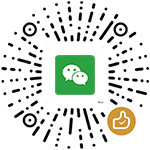Hands-On Natural Language Processing with PyTorch 1.x: Build smart,AI-driven linguistic applications using deep learning and NLP techniques
by: Thomas Dop
Print length 页数: 276 pages
Publisher finelybook 出版社: Packt Publishing (9 July 2020)
Language 语言: English
ISBN-10: 1789802741
ISBN-13: 9781789802740
Book Description
Become a proficient NLP data scientist by: developing deep learning models for NLP and extract valuable insights from structured and unstructured data
In the internet age,where an increasing volume of text data is generated daily from social media and other platforms,being able to make sense of that data is a crucial skill. With this book,you’ll learn how to extract valuable insights from text by: building deep learning models for natural language processing (NLP) tasks.
Starting by: understanding how to install PyTorch and using CUDA to accelerate the processing speed,you’ll explore how the NLP architecture works with the help of practical examples. This PyTorch NLP book will guide you through core concepts such as word embeddings,CBOW,and tokenization in PyTorch. You’ll then learn techniques for processing textual data and see how deep learning can be used for NLP tasks. The book demonstrates how to implement deep learning and neural network architectures to build models that will allow you to classify and translate text and perform sentiment analysis. Finally,you’ll learn how to build advanced NLP models,such as conversational chatbots.
By the end of this book,you’ll not only have understood the different NLP problems that can be solved using deep learning with PyTorch,but also be able to build models to solve them.
What you will learn
Use NLP techniques for understanding,processing,and generating text
Understand PyTorch,its applications and how it can be used to build deep linguistic models
Explore the wide variety of deep learning architectures for NLP
Develop the skills you need to process and represent both structured and unstructured NLP data
Become well-versed with state-of-the-art technologies and exciting new developments in the NLP domain
Create chatbots using attention-based neural networks
Hands-On Natural Language Processing with PyTorch 1.x: Build smart,AI-driven linguistic applications using deep learning and NLP techniques
未经允许不得转载:finelybook » Hands-On Natural Language Processing with PyTorch 1.x: Build smart,AI-driven linguistic applications using deep learning and NLP techniques
 finelybook
finelybook

